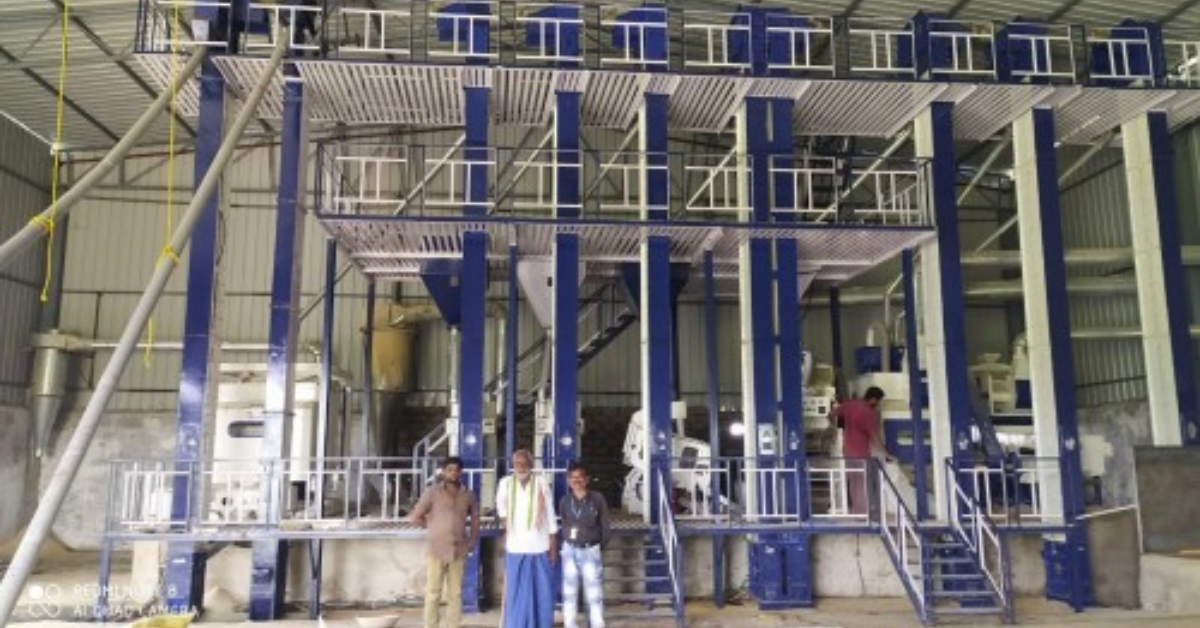The Future of Rice Processing: Exploring the Automatic Rice Mill
In today’s rapidly evolving agricultural landscape, the Automatic Rice Mill stands as a beacon of technological advancement and efficiency. As global food demands rise and labor costs increase, traditional milling methods are proving less efficient and more time-consuming. This has led to a growing shift towards automation in rice processing. Automatic rice mills are transforming the industry by offering higher productivity, reduced wastage, and consistent grain quality, all while minimizing human intervention.
Understanding the Automatic Rice Mill
An automatic rice mill is a fully integrated system designed to automate every step of rice processing—from paddy cleaning, de-stoning, husking, and whitening to grading and packaging. Unlike traditional mills, which rely heavily on manual operations, automatic mills are powered by cutting-edge machinery that ensures uniformity and speed.
These mills are designed to handle large volumes of paddy rice with minimal input. The process begins with pre-cleaning to remove impurities like stones and dust. It is followed by de-husking to remove the outer husk layer, and then the rice is polished and graded for market distribution. Automation allows for the precise adjustment of every step, resulting in superior quality and reduced losses.
Benefits of Using an Automatic Rice Mill
The rise in popularity of automatic rice mills is largely due to the multitude of benefits they offer to rice producers, millers, and consumers alike.
1. Efficiency and Speed
One of the key advantages of using an automatic rice mill is the significant increase in processing speed. These machines can process hundreds of tons of rice daily, a feat impossible for manual or semi-automatic mills. The streamlined process ensures faster output and quicker turnaround times.
2. Improved Grain Quality
Automatic rice mills come equipped with advanced sensors and settings that allow for precise control over the milling process. This leads to better quality rice with uniform grain size and reduced breakage. Consumers are more likely to purchase high-quality, polished rice that meets industry standards.
3. Cost Savings in the Long Run
While the initial investment in an automatic rice mill can be high, the long-term cost savings are significant. Automation reduces the need for manual labor, lowers energy consumption, and minimizes waste, resulting in better profit margins for mill owners.
4. Consistency in Output
In traditional milling methods, results can vary significantly depending on the operator’s skill and attention to detail. In contrast, automatic rice mills deliver consistent output thanks to their programmable settings and self-regulating mechanisms. This consistency is crucial for meeting both domestic and international market demands.
5. Labor Optimization
Modern rice mills reduce dependence on labor, allowing skilled workers to focus on higher-value tasks such as quality control and maintenance. This optimization helps address labor shortages and reduces operational bottlenecks.
Key Components of an Automatic Rice Mill
Understanding the components of an automatic rice mill is essential for anyone looking to invest in this technology.
1. Paddy Cleaner
This is the first machine in the sequence. It removes dust, straw, and other foreign particles from the paddy. Clean paddy is essential for efficient husking and polishing.
2. De-Stoner
Stones and heavy impurities can damage milling equipment and affect rice quality. The de-stoner uses air pressure and vibration to separate stones from the grain.
3. Husker
This component removes the outer husk from the paddy grain. It typically operates using rubber rollers to minimize damage to the rice kernel.
4. Paddy Separator
Once husked, the mixture of paddy and brown rice needs to be separated. The paddy separator efficiently performs this task, ensuring that only brown rice proceeds to the next stage.
5. Whitener and Polisher
This stage is responsible for removing bran layers from brown rice and polishing it to achieve a white, glossy finish. High-quality polishing machines ensure the rice meets market standards.
6. Grader and Sorter
After polishing, rice is graded by size and sorted to remove broken grains and discolored rice. This ensures only high-grade rice reaches the consumer.
7. Packaging Unit
Modern automatic rice mills include automated packaging systems that bag and seal the final product efficiently, ready for storage or shipping.
Choosing the Right Automatic Rice Mill for Your Needs
When investing in an automatic rice mill, it’s important to consider your production goals, space requirements, and budget. There are various models available, ranging from small-scale units for local production to industrial-scale machines capable of handling large volumes daily.
Potential buyers should also consider after-sales support, availability of spare parts, and the reputation of the manufacturer. Investing in a reliable, well-supported machine will ensure long-term productivity and minimal downtime.
Environmental Impact and Sustainability
Another compelling reason to adopt automatic rice milling technology is its environmental benefits. These machines are designed to operate more efficiently, often using less water and energy compared to traditional methods. Moreover, by reducing waste and breakage, automatic rice mills contribute to sustainable agricultural practices.
Byproducts such as rice husks and bran can also be collected more efficiently and reused in the production of animal feed, biofuel, or organic fertilizer, thereby contributing to a circular economy.
The Role of Automation in the Future of Agriculture
As agriculture becomes more data-driven and technology-centric, automation will continue to play a vital role. The Automatic Rice Mill is a prime example of how technology can be leveraged to meet the demands of a growing global population.
Governments and private enterprises alike are recognizing the importance of modernizing rice production. Many countries are offering subsidies and incentives for mill owners to upgrade their equipment, further accelerating the adoption of automated technologies.
Conclusion
The Automatic Rice Mill is more than just a machine—it represents a revolution in agricultural efficiency, food quality, and economic viability. With its advanced features, high processing capacity, and ability to reduce manual labor, it is an essential tool for anyone serious about rice production in the modern era.
As we move towards a more sustainable and technologically advanced future, the automatic rice mill will undoubtedly become the standard in the rice milling industry. Its benefits extend from producers and manufacturers to consumers, offering better quality rice at lower costs and with less environmental impact. If you’re in the rice milling business, now is the time to consider making the switch to automation.







